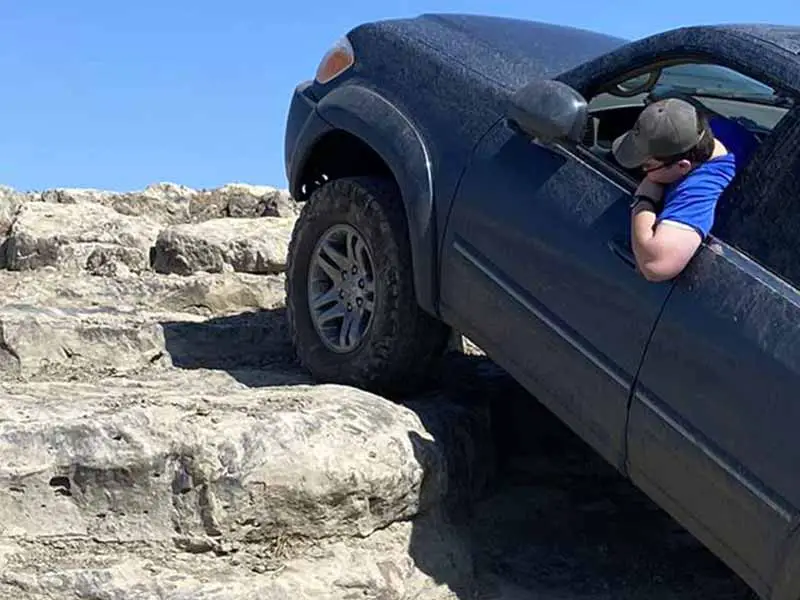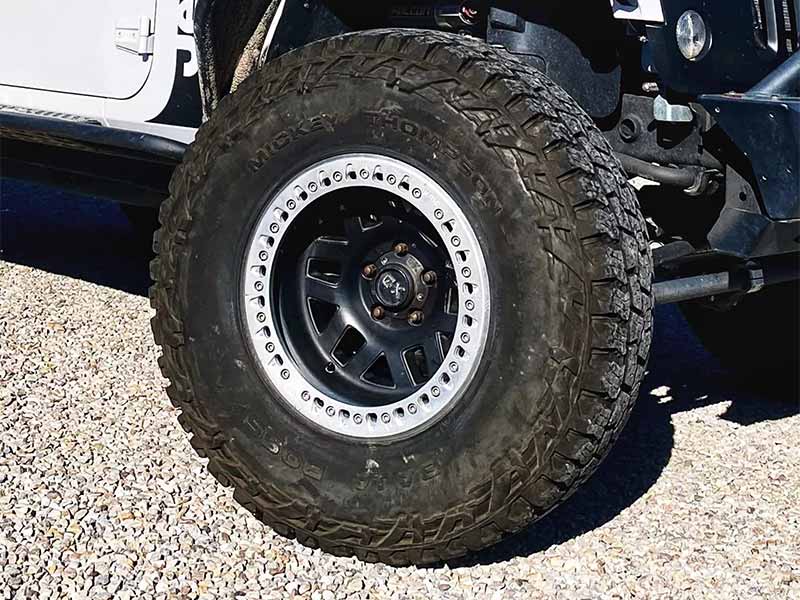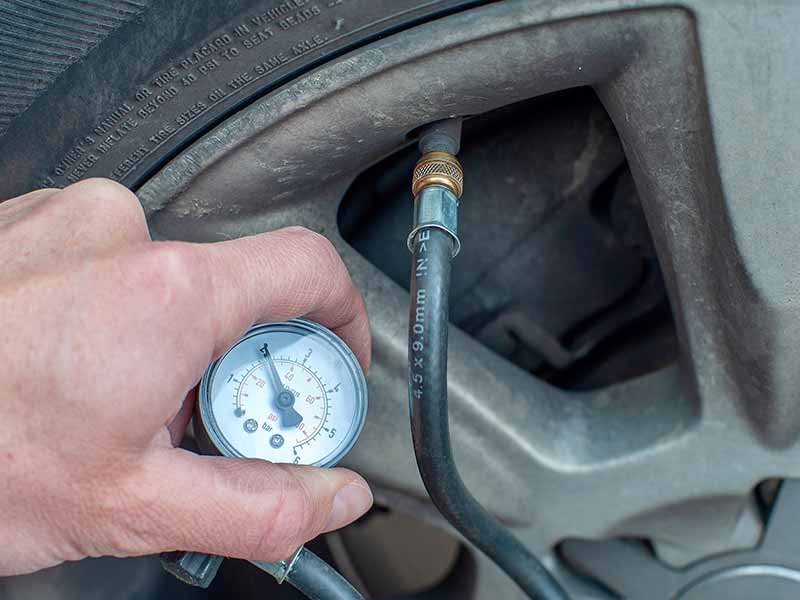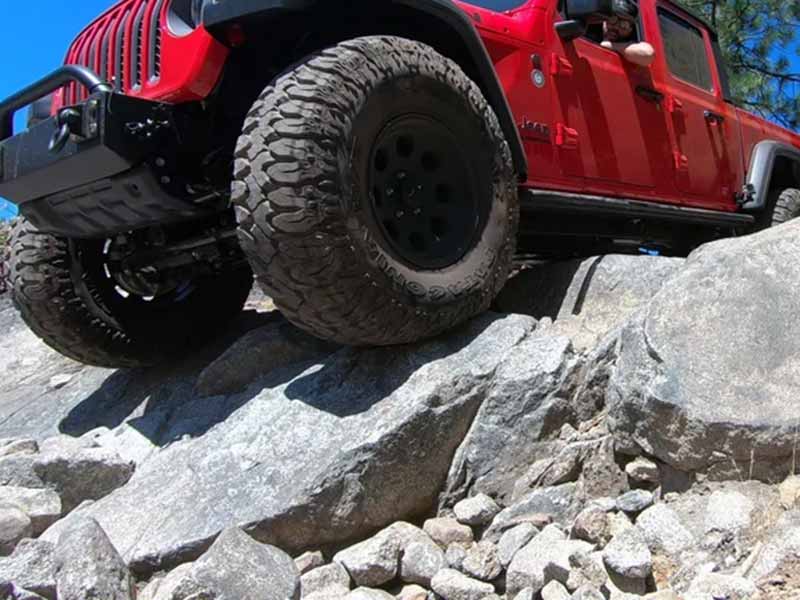Are you ready to transform your rock crawling experience from good to phenomenal? Understanding the right tire pressure can elevate your vehicle’s grip and control, making every climb feel like a victory. Let’s unlock the secrets to mastering tire pressure for the ultimate rock crawling adventure.
Best Tire Pressure For Rock Crawling
For optimal rock crawling grip, tire pressure should be adjusted lower than standard driving conditions, typically between 15-30 PSI depending on vehicle weight and tire specifications, to enhance traction and conform to uneven terrain.
In this article, we’ll explore the crucial role of tire pressure in rock crawling, delve into how various factors influence the ideal PSI, and provide practical advice and real-world examples to help you fine-tune your approach for maximum performance and safety.

The Effects of Tire Pressure on Performance
Tire pressure can drastically alter your vehicle’s handling and tire’s performance. Here’s how:
- Grip and Traction: Proper tire pressure ensures a tire’s tread evenly meets the road, maximizing the contact area and grip. In rock crawling, this means more tire surface can contour and hold onto the uneven surfaces.
- Fuel Efficiency and Wear: Incorrect tire pressure isn’t just a grip issue; it’s a wallet issue too. Too low or too high pressure leads to uneven wear, poor fuel economy, and even the risk of tire failure.
- Handling and Comfort: The right pressure absorbs shocks better and makes handling those unexpected bumps a bit more forgiving.
Finding Your Tire’s Sweet Spot
Every vehicle and tire setup has its ideal pressure range. For rock crawling, the right pressure maximizes the tire’s footprint, adapting to the rocks and crevices with enough flexibility to grip but enough rigidity to support the vehicle’s weight. This is a delicate balance that could mean the difference between a thrilling climb and a slip.
For more on the importance of airing down and the techniques involved, consider reading our detailed guide on how to air down tires for off-roading.
Regular Pressure Checks – A Habit Worth Forming
Rock crawling is unpredictable, and so is tire pressure. Altitude, temperature, and even the day’s wear can alter it. That’s why checking your tire pressure regularly, ideally before every challenging journey, isn’t just good practice—it’s essential for your safety and performance.

The Role of Tire Pressure in Rock Crawling
Venturing into the rock crawling world means understanding the pivotal role of tire pressure. It’s about more than just air; it’s about adapting to the rugged, unpredictable terrain under your wheels. Let’s break down how tire pressure becomes a game-changer in your rock-crawling adventures.
Grip and Traction: The Essentials of Crawling
When it comes to crawling over boulders and navigating treacherous paths, the grip is king. Here’s how tire pressure impacts your command over the vehicle:
- Enhanced Footprint: Lowering tire pressure allows more of the tire to make contact with the ground, increasing traction. It’s like giving your vehicle a wider, more adaptive set of hands to grab onto the rocks.
- Conformity to Terrain: A slightly deflated tire can wrap around obstacles, ensuring that more tread grips onto the surface. This adaptability is crucial when every inch of contact counts.
The Risks of Getting it Wrong
While adjusting tire pressure is key, there’s a fine line between optimal and hazardous:
- Underinflation: Go too low, and you risk damaging the tire, losing a bead, or worse, ending up with a flat in the middle of your trail. It’s a balance between increased grip and the safety of your tires.
- Overinflation: On the flip side, too much pressure leads to a reduced contact area and a bouncier, less controlled ride. Overinflated tires on a rock surface might as well be balloons trying to grip granite.
Practical Steps to Optimal Pressure
Finding that sweet spot requires understanding your vehicle’s weight, tire characteristics, and the terrain. Here’s how to approach it:
- Start with Manufacturer Recommendations: Use the suggested PSI as a baseline and adjust from there based on your specific rock-crawling needs.
- Use the Right Tools: A reliable tire gauge and a portable air compressor are your best friends for making precise adjustments and corrections on the go.
For insights into adjusting tire pressure based on different terrains, check out our guide on airing down without beadlocks.
Adjusting as You Go
The best rock crawlers know that tire pressure isn’t a “set it and forget it” affair. As you navigate different terrains, keep an eye on how your vehicle handles and be prepared to adjust. Remember:
- Temperature Changes: As you drive, tires heat up, affecting pressure. What started as perfect at the trailhead might need tweaking a few miles in.
- Terrain Variation: What works for gravelly paths won’t be ideal for slick rock or mud. Adapt and conquer by adjusting pressure as needed.

Factors Influencing Optimal Tire Pressure for Rock Crawling
As we delve deeper into the world of rock crawling, it’s clear that one tire pressure does not fit all. Various factors can influence the ideal PSI for your off-road adventure. Understanding these will help you tailor your tire pressure for maximum performance and safety.
Vehicle Weight and Distribution
Your vehicle’s weight and how it’s distributed play a significant role in determining the right tire pressure. Here’s what to keep in mind:
- Heavier Vehicles: Generally require a bit more pressure to support the additional weight without compromising tire integrity.
- Load Distribution: Modifications and cargo can shift the weight, affecting how pressure should be distributed across tires.
Tire Size, Type, and Tread Pattern
Not all tires are created equal, especially when it comes to rock crawling:
- Size Matters: Larger tires often benefit from lower pressure as they have a larger volume to distribute the weight.
- Type and Tread: Off-road tires with specific tread patterns might perform differently under various pressures. Understanding your tire’s design will guide you to the right PSI.
Explore our detailed analysis of how much to air down tires for snow to understand how different conditions affect tire pressure needs.
Terrain and Rock Characteristics
The rocks and terrain you’re conquering aren’t just obstacles; they’re factors in your tire pressure equation:
- Rock Size and Sharpness: Smoother rocks might require less pressure for grip, while jagged terrain might demand a slightly firmer tire to prevent punctures.
- Incline and Stability: Steeper inclines and loose surfaces may require adjustments to pressure to enhance stability and traction.
Weather Conditions and Temperature Effects
Weather and temperature aren’t just small talk; they’re critical to your tire pressure settings:
- Temperature Swings: As temperatures rise and fall, so does your tire pressure. A cool morning might mean a different PSI requirement by the afternoon.
- Wet vs. Dry Conditions: Moisture can change the terrain’s texture, requiring pressure adjustments to maintain grip.
How to Factor It All In
Now, taking all these variables into account might seem daunting, but here’s how you can approach it:
- Start with Baseline Recommendations: Use your vehicle and tire manufacturer’s guidelines as a starting point.
- Consider the Day’s Conditions: Look at the weather, the terrain, and your planned route to anticipate changes.
- Adjust Based on Experience: As you crawl more rocks, you’ll get a sense of how your vehicle responds to pressure changes. Use this experience to make informed adjustments.

Craftsman Portable Air Compressor
Determining the Best Tire Pressure for Rock Crawling
Now that we understand the factors affecting tire pressure, let’s get into the nitty-gritty of finding that sweet spot for your tires. This is where science meets art, and a bit of trial and error, to ensure your vehicle grips the rocks like a pro.
Starting Points: General Guidelines
There’s no universal pressure perfect for all conditions, but here are some general guidelines to get you started:
- Lightweight Vehicles: Might start at the lower end of the spectrum, perhaps 15-20 PSI.
- Heavier Vehicles: Generally need a bit more, maybe around 20-30 PSI.
Remember, these are just starting points. Your ideal pressure will depend on the specific factors we discussed earlier.
The Trial and Error of Adjusting Pressure
Finding the right pressure is a hands-on process:
- Make Small Adjustments: Lower or increase the pressure in small increments to see how it affects your grip and vehicle handling.
- Test and Observe: After each adjustment, drive a short distance over the terrain. Pay attention to how the vehicle handles and how the tires conform to obstacles.
Tools for the Job
Having the right tools will make this process much smoother:
- Quality Tire Gauge: Ensure it’s accurate and easy to read for precise adjustments.
- Portable Air Compressor: For inflating tires back up after you’ve found the right pressure or if you’ve gone too low.
Monitoring and Adjusting on the Go
As you navigate the terrain, keep these tips in mind:
- Continual Monitoring: Conditions change, so what worked at the beginning of the trail might need tweaking further along.
- Be Prepared to Adjust: If you feel reduced traction or observe handling changes, be ready to stop and modify the pressure.
Safety First: Avoiding Common Pitfalls
While adjusting tire pressure can greatly enhance grip and performance, there are risks if not done carefully:
- Avoid Too Low Pressure: This can lead to de-beading or damaging the tire, especially if you don’t have beadlock wheels.
- Don’t Ignore Tire Limits: Each tire has a minimum and maximum pressure rating. Stay within these limits to avoid tire failure.
Resources
Below are some links you may find helpful when learning about tires:
- The best tire air pressure for off-roading – Inside Line | DrivingLine
- Do you know the science behind “airing down your tires” for rock crawling and extreme off-road travel? – Nexen Tire
Final Thoughts
The best tire pressure for rock crawling is not a fixed number but a well-considered balance influenced by vehicle type, tire characteristics, and the terrain you’re tackling.
Starting with manufacturer recommendations and adjusting based on experience and conditions is key.
To equip yourself with the right tools for pressure adjustments and always prioritize safety.
Good luck and happy motoring.





